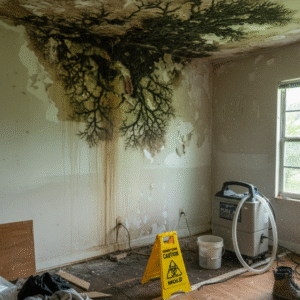When it comes to roof repairs, one size does not fit all. The type of roof—flat or sloped—plays a major role in how repairs are approached, what materials are used, and how long the fix will last. Understanding the differences between flat and sloped roof repairs can save homeowners time, money, and frustration.
Whether you’re a homeowner, property manager, or a roofing contractor, knowing these distinctions helps ensure the right repair strategy is used for each situation.
Understanding Roof Types: Flat vs. Sloped
What Is a Flat Roof?
A flat roof is a horizontal or nearly horizontal surface, typically with a pitch of 10 degrees or less. These roofs are common in commercial buildings, modern homes, and urban environments.
Common flat roofing materials:
- Modified bitumen
- EPDM (rubber membrane)
- TPO (thermoplastic)
- Built-up roofing (BUR)
What Is a Sloped Roof?
A sloped roof has an incline or pitch that helps water and debris flow downward. The pitch can vary based on architectural style and climate. Sloped roofs are more typical in residential buildings.
Common sloped roofing materials:
- Asphalt shingles
- Clay or concrete tiles
- Metal panels
- Wood shakes
Key Differences in Repair Approaches
1. Water Drainage and Leak Risks
- Flat Roofs: Prone to pooling water due to minimal slope, which increases the risk of leaks. Repairs often focus on sealing seams, addressing ponding areas, or replacing membrane sections.
- Sloped Roofs: Water runs off naturally, but leaks often originate from damaged shingles, flashing, or underlayment. Repairs typically involve replacing damaged materials or re-sealing joints.
2. Material Compatibility and Availability
- Flat roofs use large sheets or layered systems, making localized repairs more complex.
- Sloped roofs often use discrete materials (like shingles), making it easier to replace a few damaged components.
3. Access and Safety
- Flat roofs offer easier and safer access for repairs and inspections.
- Sloped roofs pose safety risks, often requiring harnesses and special equipment for safe navigation.
4. Cost and Labor
- Flat roof repairs may seem cheaper at first, but ongoing maintenance can add up due to membrane vulnerability.
- Sloped roof repairs may cost more initially due to labor intensity, but materials are typically more durable and longer-lasting.
Repair Lifespan and Maintenance Considerations
Flat Roof Maintenance
- Frequency: Requires more frequent inspections—at least twice a year.
- Vulnerabilities: Seams, drainage systems, and UV degradation.
- Repair Lifespan: Patching may last 3–7 years; full re-roofing could last 15–20 years.
Sloped Roof Maintenance
- Frequency: Annual inspections are generally sufficient.
- Vulnerabilities: Cracked shingles, flashing, ice dams.
- Repair Lifespan: Asphalt shingle patches may last 10–15 years; full replacements can last 20–50 years depending on material.
When to Repair vs. Replace
Knowing when a roof needs repair versus full replacement depends on the extent of the damage and the age of the roof.
Repair is best when:
- Damage is isolated or caused by a single event.
- The roof is relatively new or still under warranty.
- Budget constraints prevent a full replacement.
Replacement is necessary when:
- Damage is widespread (especially on flat roofs).
- Roof is at or beyond its expected lifespan.
- Recurring leaks indicate underlying structural issues.
Choosing the Right Roofing Professional
Not all roofers specialize in both flat and sloped systems. Hiring a contractor with specific experience in your roof type is critical.
Questions to ask a roofer:
- Do you have experience with my roof type?
- What materials do you recommend for repairs?
- How do you handle drainage and waterproofing?
Always get multiple quotes and request a detailed inspection report before committing to repairs.
Final Thoughts
Flat and sloped roofs serve different structural and aesthetic purposes. Understanding their unique repair requirements can help you make informed decisions about maintenance, cost, and long-term care.
No matter the roof type, early detection and proactive maintenance are the best defenses against costly repairs. If you’re unsure which solution is right for your home or building, consult a licensed roofing expert.
FAQs
- Which roof type is cheaper to repair?
Generally, flat roofs may have lower upfront repair costs but can be more expensive over time due to frequent maintenance. Sloped roofs can be costlier initially but are more durable in the long run.
- Can I walk on my flat roof for inspections?
Yes, but with caution. Flat roofs can support limited foot traffic, but always wear soft-soled shoes and avoid stepping on vulnerable areas like seams or vents.
- Do flat roofs leak more often than sloped roofs?
Yes. Due to poor drainage and pooling water, flat roofs are more susceptible to leaks if not properly maintained.
- What is the most durable roofing material for a sloped roof?
Metal roofing is among the most durable options, lasting 40–70 years with minimal maintenance. Tile and slate are also highly durable but heavier and more expensive.
- How often should I inspect my roof for damage?
Inspect flat roofs at least twice a year and after major storms. Sloped roofs typically need annual inspections unless damage is suspected.




